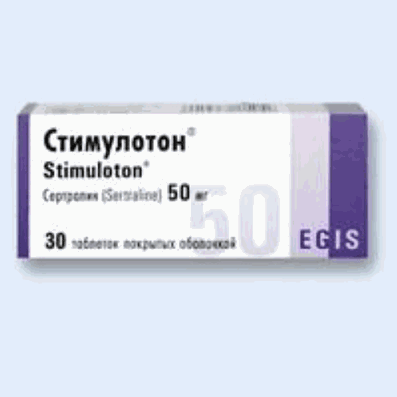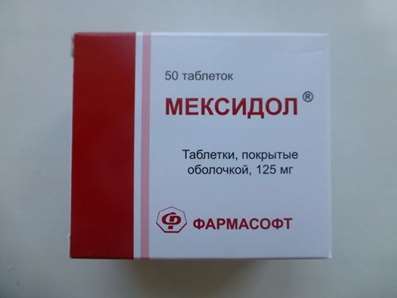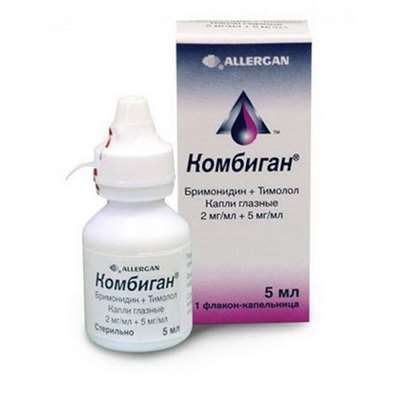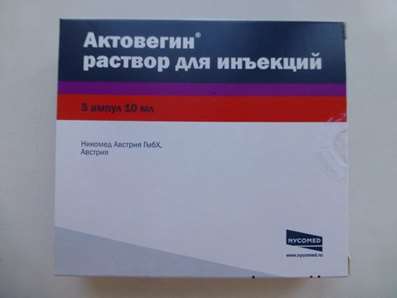Instruction for use: Diazepeks
I want this, give me price
Trade name of the drug – Diazepeks
Active substance: Diazepamum (genus. Diazepami)
Chemical name: 7-Chloro-1,3-dihydro-1-methyl-5-phenyl-2H-1,4-benzodiazepin-2-one
Dosage Form: tablets,
Composition of Diazepeks
1 tablet contains 2 or diazepam 5 mg; in blister 10 pcs., in a cardboard unit 2 blisters.
Pharmacotherapeutic group: Anxiolytics
ATX Code
N05BA01 Diazepam
The nosological classification (ICD-10)
F10.2 alcohol dependence syndrome: Alcoholism; Alcohol addiction; posiomania; Dependence on alcohol; dipsomania; drunken state; alcohol abuse; Ideatornoy violations in alcoholism; Quarterly booze; Obsessive craving for alcohol; Neurotic symptoms of alcoholism; Craving for alcohol; Psychoorganic syndrome in chronic alcoholism; Reduced craving for alcohol; Saint Martin's evil.
F32 Depressive episode: adynamic subdepression; Astheno-adynamic state subdepressive; Asthenic-depressive disorder; Asthenic-depressive state; Asthenic-depressive disorder; Asthenic-depressive state; Major depressive disorder; Sluggish-apathetic depression with inhibition; Double depression; depressive pseudodementia; Depressive disorder; Depressed mood disorder; Depressive disorder; mood Depressive disorder; the doldrums; Depressive disorders; Depressive syndrome; Depressive syndrome larvirovanny; Depressive syndrome with psychosis; masked Depression; Depression; exhaustion Depression; Depression with symptoms of lethargy within cyclothymia; Depression smiling; involutionary depression; involutionary melancholy; involutional depression; Manic-depressive disorder; masked depression; Melancholic attack; Neurotic depression; Neurotic depression; Shallow depression; Organic depression; Organic depressive syndrome; Simple depression; Simple melancholic syndrome; Psychogenic depression; Reactive depression; Reactive depression is a moderately severe; psychopathological symptoms; Reactive depression; Reactive depression; Recurrent depression; Seasonal depressive syndrome; Senesto-pathic depression; senile depression; Symptomatic depression; somatogenic depression; cyclothymic depression; Exogenous depression; lypothymia; Endogenous depression; The endogenous depressive syndrome.
F41 Other anxiety disorders: anxiety Relief; Nonpsychotic anxiety disorders; An alarm condition; Anxiety; Disturbingly suspicious condition; Chronic anxiety; Sense of anxiety.
G24 Dystonia: Violation of muscle tone.
I10 Essential (primary) hypertension: Arterial hypertension; Arterial hypertension; Arterial hypertension crisis course; Arterial hypertension, complications of diabetes; Arterial hypertension; The sudden increase in blood pressure; Hypertensive disorders of blood circulation; Hypertensive condition; Hypertensive crises; Hypertension; Arterial Hypertension; Malignant hypertension; Essential Hypertension; Hypertonic disease; Hypertensive crises; Hypertensive crisis Hypertension; Malignant hypertension; Malignant hypertension; Isolated systolic hypertension; Hypertensive crisis; Exacerbation of essential hypertension; Primary hypertension; Transient hypertension; Essential hypertension; Essential hypertension; Essential hypertension; Essential hypertension.
I15 Secondary hypertension: Arterial hypertension; Arterial hypertension; Arterial hypertension crisis course; Arterial hypertension, complications of diabetes; Arterial hypertension; Renovascular hypertension; The sudden increase in blood pressure; Hypertensive disorders of blood circulation; Hypertensive condition; Hypertensive crises; Hypertension; Arterial Hypertension; Malignant hypertension; Hypertension is symptomatic; Hypertensive crises; Hypertensive crisis; Hypertension; Malignant hypertension; Malignant hypertension; Hypertensive crisis; Exacerbation of essential hypertension; Renal hypertension; Renovascular hypertension; Renovascular hypertension; Symptomatic arterial hypertension; Transient hypertension.
K25 Gastric ulcer: Helicobacter pylori; Pain at stomach ulcer; Pain syndrome in gastric ulcer and duodenal ulcer; Inflammation of the gastric mucosa; Inflammation of the gastrointestinal mucosa; Benign gastric ulcer; The disease of the stomach and duodenum, asotsiirovannoe with Helicobacter pylori; Aggravation gastroduodenita against the backdrop of a peptic ulcer; The aggravation of ulcer disease; The aggravation of gastric ulcer; The organic gastrointestinal disease; Peptic ulcer and duodenal ulcer; Postoperative gastric ulcer; Recurrent ulcers; Symptomatic gastric ulcers; Symptomatic ulcers of the stomach and duodenum; Chronic inflammatory disease of the upper gastrointestinal tract, associated with Helicobacter pylori; Eradication of Helicobacter pylori; Erosive and ulcerative lesions of the stomach; Erosive lesions of the stomach; The erosion of the gastric mucosa; Peptic ulcer disease; Stomach ulcer; Gastric lesion; Ulcerative lesions of the stomach.
K26 Duodenal Ulcer: Pain with duodenal ulcer; Pain syndrome in gastric ulcer and duodenal ulcer; The disease of the stomach and duodenum, asotsiirovannoe with Helicobacter pylori; The aggravation of ulcer disease; The worsening of duodenal ulcer; Peptic ulcer and duodenal ulcer; Relapse of duodenal ulcers; Symptomatic ulcers of the stomach and duodenum; Eradication of Helicobacter pylori; Erosive and ulcerative lesions of the duodenum; Erosive and ulcerative lesions of the duodenum, associated with Helicobacter pylori; Erosive lesions of the duodenum; Duodenal ulcer; Ulcerative lesions of the duodenum
M05 Seropositive rheumatoid arthritis: Seropositive rheumatoid arthritis
M54.3 Sciatica: sciatica; Neuralgia of the sciatic nerve; Neuritis of the sciatic nerve.
M54.4 Lumbago with sciatica: Pain in the lumbosacral spine; Lumbago; Lumbar syndrome; Sciatica.
N94.3 syndrome premenstrual tension: Severe premenstrual syndrome; Menstrual psychosomatic disorder; Menstrual syndrome; Premenstrual tension; Premenstrual state; Premenstrual period; Premenstrual syndrome; menstrual syndrome.
N95.1 menopausal and menopausal status of women: Atrophy of the mucosa of the lower genital tract, caused by estrogen deficiency; Vaginal dryness; Autonomic dysfunction in women; Hypoestrogenic state; Deficiency of estrogen in menopausal women; Degenerative changes of the mucous membrane in the menopause; Natural menopause; Intact uterus; Climax; Menopause for women; Menopause in women; Menopausal depression; Climacteric ovarian dysfunction; Menopause; Climacteric neurosis; Menopause; Menopausal symptoms complicated psychovegetative; Climacteric syndrome; Climacteric vegetative disorders; Climacteric psychosomatic disorder; Menopausal disorders; Menopausal disorders in women; Menopausal state; Climacteric vascular disorders; Menopause; Premature Menopause menopausal vasomotor symptoms; Menopausal period; Lack of estrogen; Feeling the heat; Pathological menopause; perimenopause; menopause; postmenopausal period; Postmenopausal period; Postmenopausal period; Post-menopausal period; Premature menopause; premenopausal; Premenopauznom period; Tides; Hot flashes; Tides blood to the face in the Meno and postmenopausal women; Hot flashes / hot flashes in menopause; Heart attack during menopause; Early menopause in women; Disorders of menopause; Climacteric syndrome; Vascular complications of menopause; The physiological menopause; Estrogendefitsitnye state.
R25.2 Cramp and spasm: Painful muscle spasm; Mimic spasm; Muscle spasticity; Muscle spasms; Muscle spasms in tetanus; Muscle spasms of central origin; Muscle spasms of; Muscle spasm; Neurological contracture with spasms; Night cramps in the limbs; Night cramps in the legs; Night leg cramps; Symptomatic convulsive state; West syndrome; Smooth muscle spasm; Spasm of smooth muscle; Spasm of vascular smooth muscle; Muscle spasms; The spasm of the striated muscles due to organic diseases of the central nervous system; The spasm of skeletal muscles; The spasms of smooth muscles of internal organs; Muscle cramps; The spasms of skeletal muscles; Spastic condition of striated muscle; Spastic pain; Spasmodic state of smooth muscle; Spasticity of the skeletal muscles; Muscle cramps; Convulsions; Leg cramps; Seizures of central origin; Convulsive state; Spastic syndrome; Convulsive status in children; Tonic seizures; The phenomenon of folding knife; Cerebral spastic syndrome.
R45.1 Restlessness and agitation: Agitation; Anxiety; explosive excitability; The internal excitation; Excitability; Excitation; Excitation sharp; psychomotor excitement; hyperexcitability; motor stimulation; Relief of agitation; jitters; restless; Night concern; The acute stage of schizophrenia with excitement; Acute mental stimulation; paroxysm excitation; overexcitement; erethism; Increased nervous irritability; Increased emotional and cardiac excitability; Increased arousal; hyperphrenia; Psychomotor agitation; Psychomotor agitation; Psychomotor agitation in psychosis; Psychomotor agitation epileptic nature; psychomotor paroxysm; psychomotor seizures; excitation Symptoms; The symptoms of psychomotor agitation; Status agitation; Status anxiety; excitation condition; Status of high concern; Condition of psychomotor agitation; anxiety states; excited states; anxiety states with somatic diseases; feeling of excitation; Feeling restless; Emotional arousal.
R45.4 Irritability and anger: tantrum; Anger; Dysphoria; Neurosis with increased irritability; exasperation; Increased irritability; Increased irritability of the nervous system; Irritability; Irritability with nervousness; Irritability with psychotic disorders; The symptoms of irritability.
R45.7 State of emotional shock and stress, unspecified: Exposure to stressors; Exposure to extreme situations; Long-term emotional stress; Neuropsychiatric stress; occupational stress; Psychological stress at interrail; Psycho-emotional overload and stress; Psycho-emotional tension in stressful situations; emotional stress; stress condition; Stress; The stress load; stress state; stressful situations; stress state; The stresses of everyday life; Chronic stress.
T90-T98 Effects of injuries, poisoning and other external causes.
Pharmacological Properties of DiazepeksPharmachologic effect
Mode of action - an anticonvulsant, anxiolytic, muscle relaxant, hypnotic, sedative.
Is a benzodiazepine receptor ligand, promotes liberatiou GABA and its participation in synaptic transmission.
Pharmacodynamics
Soothing and anti-anxiety effects are due to the influence of benzodiazepine receptors of the limbic system; muscle relaxant and anticonvulsant - inhibition of spinal reflexes.
Indications for Diazepeks
Anxiety, anxiety, stress, depression, depression; as a component of comprehensive treatment is also used for seizures, hypertension, rheumatoid arthritis, lumbago, cancers, menopause, premenstrual syndrome, disalgomenoree, gastric ulcer and duodenal ulcer, spasticity of the skeletal muscles, alcoholism, trauma consequences.
Contraindications for Diazepeks
Hypersensitivity, glaucoma, myasthenia gravis. Contraindicated in I-st trimester of pregnancy; at the time of treatment must stop breastfeeding.
Diazepeks Dosage and Administration
Inside. When the states of anxiety and worry: 2-5 mg 2-4 times a day.
In spastic conditions: 2-10 mg 3-4 times a day. The maximum daily dose for outpatients - 15 mg.
Children up to 3 years - 1-5 mg, 4-12 years - 2-10 mg / day, usually for 1-3 reception.
Side effect of Diazepeks
Drowsiness, dizziness, weakness, ataxia, headache; rarely - visual impairment, euphoria, jaundice, dry mouth, nausea, constipation, shortness of breath, tachycardia, hypotension, leukopenia, granulocytopenia, allergic reactions.
Interaction
The effect of increasing the phenothiazines, barbiturates, MAO inhibitors, cimetidine, alcohol.
Overdose of Diazepeks
Symptoms: drowsiness, sedation reflexes possible - coma.
Treatment: symptomatic. The specific antidote - flumazenil.
SPECIAL INSTRUCTIONS for Diazepeks
Be wary appointed in violation of the heart, respiratory, liver and kidney, organic brain lesions, elderly patients and children. During the reception, it is recommended to avoid work related to the risk and speed of reactions.
Storage conditions of Diazepeks
In a dry place at room temperature.
Keep out of the reach of children.
Shelf life of Diazepeks
5 years.
Do not use beyond the expiration date printed on the package.
Conditions of supply of Diazepeks from pharmacies
On prescription.

 Cart
Cart





